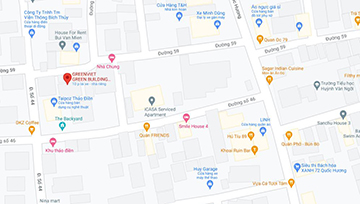ENERGY EFFICIENT STICKS AND CARROTS
A typical green building will have to comply with five categories of requirements including energy and water savings, sustainable materials, indoor air quality and sustainable sites. Various rating tools have different levels of thresholds but there is no doubt that energy efficiency is one of the most critical requirements.
The three popular green building rating tools in Vietnam at the moment which include LEED, LOTUS and Green Mark, all put energy efficiency as a top priority. They even require a building to meet a certain level of energy savings to be certified. This means that if a building fails to meet this threshold, it will never be awarded with a certificate even if the building spends a lot of money to meet all other requirements.
Take LEED for example, this US-based green building tool requires a building to save at least 10 per cent of its energy compared to the baseline number. Any building that performs below 10 per cent savings does not meet requirements and therefore will not receive the award.

Energy-efficient projects will help save a big amount of operation cost in the long run
National building code starts drive on energy efficiency
Last year, the Ministry of Construction issued the Energy Efficiency Building Code, or EEBC. The code requires all commercial and residential buildings with the total construction area of more than 2,500 square metres to surpass energy efficiency for both new construction and renovation.
To be compliant with this code, the building envelope and engineering systems must be designed in a specific manner. The code has very specific requirements for each item. For example, glass used for windows must be well insulated and must meet certain thresholds. Similarly, all energy consuming equipment in a building including lighting, air-conditioning and elevators must also meet exacting requirements.
However, these requirements are quite new to both design firms and provincial officials. A series of training sessions have been initiated at the Department of Construction on how to verify projects to comply with this new code. In fact, a similar code was issued in 2005 but the implementation was not mandatory because these standards were not only new to professionals, but it was also costly to comply because the criteria are quite strict compared with building standards at that time.
Incentive programme
Fortunately, an incentive programme is to be launched in Vietnam by IFC, a member of World Bank Group. The Excellence in Great Design and Efficiency programme, or EGDE focuses on energy savings, water savings and using sustainable materials. There will be certain soon-to-be-released incentives for projects that comply with this rating tool. Owners who want to apply for this scheme must submit all documents to the Vietnam Green Building Council, or VGBC to be reviewed and certified. Then owners can approach banks for the incentive programme. I eagerly anticipate this programme as it will help Vietnam develop more and more sustainable buildings.
Energy price hedge
Whether by stick or by carrot, project owners should pursue energy efficiency for new construction and existing buildings. The rationale behind this decision is increasing energy prices. A building that uses less energy of course has lower operational costs and therefore a lower product base price. In addition, once energy prices increase, the gap is even wider and the less efficient buildings will suffer more in the long run.
Once an energy efficient building is built, they are easy to maintain and cheap to run. There are two major groups of design strategies to be energy efficient: passive and active designs. Passive design focuses on building orientation and envelope, while active designs mainly deal with energy efficient equipment. An important point to note is that passive designs are much more cost effective than active designs. So a competent consultant plays a critical role in helping owners have an energy efficient building at a reasonable cost.
In conclusion, having a building designed and built to energy efficient standards is a wise choice for owners at the moment. Design professionals now can run energy simulation software to optimise the energy savings versus upfront investments. Manufacturers like BlueScope do not charge a premium for high SRI roofing materials that save energy. It is time to build energy efficient projects otherwise we shall miss the chance.

